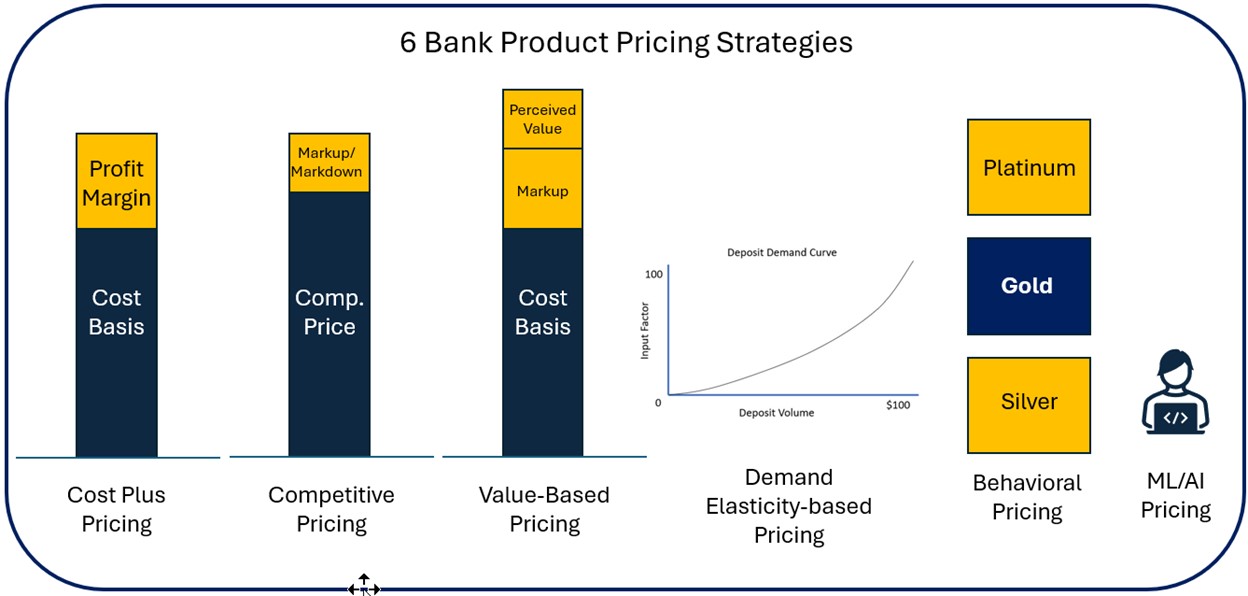Trick Factors to Take Into Consideration When Crafting Your Pricing Strategy
Trick Factors to Take Into Consideration When Crafting Your Pricing Strategy
Blog Article

Master Effective Rates Techniques to Make The Most Of Earnings
In the ever-evolving landscape of commerce, grasping efficient rates strategies is essential for companies aiming to make the most of revenue. A nuanced understanding of prices psychology can dramatically influence customer actions and acquiring decisions.
Understanding Rates Psychology
Comprehending pricing psychology is crucial for organizations intending to optimize their rates methods. This area analyzes exactly how customers perceive rates and just how these understandings affect their getting choices. Secret concepts in prices psychology include the anchoring result, where the first price offered serves as a referral point for consumers, and the idea of cost level of sensitivity, which varies amongst various client sectors.
Additionally, organizations can utilize the notion of viewed worth, where the regarded benefits of a product or service can justify a higher cost point. Costs rates can create an aura of exclusivity, attracting customers that connect greater prices with remarkable top quality. On the other hand, mental prices, such as establishing a rate at $9.99 rather than $10, can significantly influence customer habits by making prices appear a lot more eye-catching.
Furthermore, shortage and necessity can boost the viewed worth of products, prompting quicker buying choices. Comprehending these emotional triggers allows businesses to create rates approaches that not just drive sales yet additionally foster customer commitment. Thus, understanding prices psychology is necessary for effective rates method formulation, causing enhanced earnings and market positioning.
Executing Value-Based Prices

Next, sector your consumers based on their readiness to pay and the worth they regard. By doing so, you can tailor offerings and pricing techniques to straighten with various sections.
Continuously keep track of market problems and client feedback to improve your rates technique over time. By implementing value-based prices, businesses can improve productivity while fostering long-lasting consumer commitment.
Checking Out Dynamic Rates Models
In today's rapidly altering market landscape, dynamic prices designs have actually arised as a powerful method for services seeking to maximize profits and react to changes in need. These designs enable firms to adjust their prices in real-time based upon various factors such as customer behavior, market trends, and supply degrees. By leveraging data analytics and algorithms, organizations can determine ideal prices points that maximize sales while remaining competitive.
Dynamic pricing can take different kinds, including time-based pricing, where prices vary based on time of day or season, and demand-based pricing, which adjusts rates according to existing customer demand. This flexibility not only improves success however also boosts client fulfillment by using prices that reflect real-time market conditions.
Applying vibrant prices requires a robust technological infrastructure and a deep understanding of customer segments. It is essential for businesses to keep an eye on market signals and click this link consumer feedbacks constantly, guaranteeing that pricing methods line up with more comprehensive company objectives. Clear communication concerning pricing adjustments can help minimize consumer discontentment and foster depend on, ultimately leading to sustained productivity in a competitive marketplace. Welcoming dynamic rates can therefore be a transformative approach in the pursuit for taking full advantage of profits.
Analyzing Competitor Prices
Keeping track of competitor rates is necessary for organizations aiming to preserve an one-upmanship in their corresponding markets. By assessing competitors' prices approaches, firms can determine market patterns, understand customer preferences, and adjust their prices as necessary. This evaluation entails event information on competitors' prices, advertising approaches, and item offerings to inform pricing choices.
To successfully evaluate competitor pricing, businesses must utilize numerous devices and techniques, such as cost tracking software, market research study reports, and consumer feedback. This data can expose just how competitors position their services and products, permitting organizations to differentiate their offerings or adopt similar strategies to stay relevant.
In addition, it is essential to classify rivals into indirect and straight rivals. Straight competitors offer similar service or products, while indirect competitors might meet the same consumer requirement with various services. Understanding the subtleties between these teams will certainly make it possible for services to tailor their prices strategies more properly.
Ultimately, recurring rival rates evaluation is important for making enlightened pricing choices. It permits organizations to continue to be active in response to market shifts, guaranteeing they can confiscate chances and mitigate dangers related to pricing methods.
Examining Prices Performance
Understanding exactly how rival prices influences market characteristics leads to an all-natural focus on examining rates performance within one's own organization. This evaluation is essential for recognizing locations of strength and chances for enhancement, inevitably boosting productivity.

Additionally, carrying out normal rates audits can reveal disparities in between expected and real efficiency. This entails comparing rates information throughout various sections and networks to recognize variances and identify trends. Integrating here customer responses can offer insights right into viewed worth versus actual rates, making certain positioning with market assumptions.
Last but not least, leveraging information analytics tools can assist in deeper insights right into rates performance, enabling organizations to make data-driven changes (Pricing Strategy). By continually reviewing prices efficiency, companies can adjust to market changes and optimize their techniques, making certain continual success in a competitive landscape
Final Thought
By leveraging prices psychology, companies can enhance regarded value and dressmaker rates to diverse client sections. The fostering useful site of value-based and dynamic prices models helps with real-time adjustments based on need and client readiness to pay.
Understanding rates psychology is crucial for services aiming to maximize their prices approaches. Understanding these psychological triggers allows companies to formulate pricing strategies that not only drive sales yet likewise foster customer commitment. Therefore, understanding pricing psychology is crucial for efficient pricing technique solution, leading to boosted profitability and market positioning.
By evaluating competitors' rates techniques, firms can identify market patterns, comprehend customer choices, and change their prices as necessary. By leveraging pricing psychology, services can enhance regarded worth and dressmaker rates to diverse client sections.
Report this page